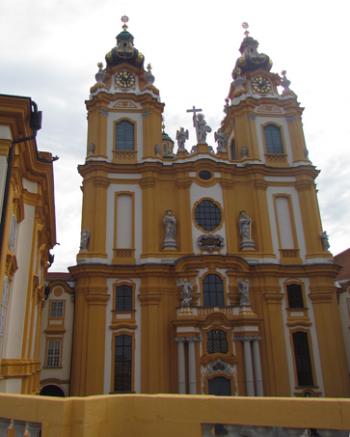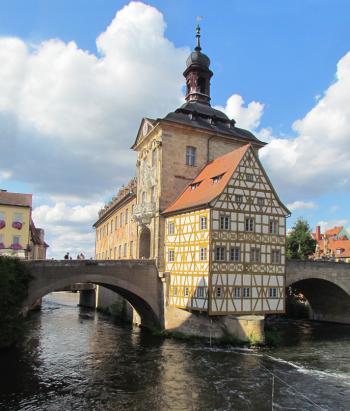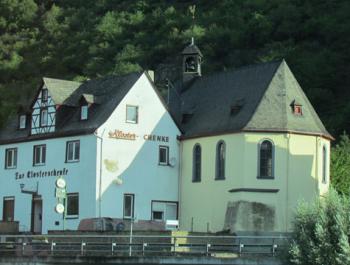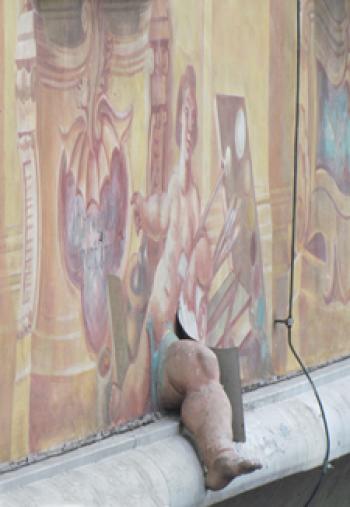Cruising Europe’s rivers with Tauck
This item appears on page 26 of the June 2020 issue.
I took a 14-day cruise from Amsterdam, Netherlands, to Budapest, Hungary, aboard the ms Treasures, a riverboat in the Tauck (Wilton, CT; 800/788-7885, www.tauck.com) fleet of vessels.
The price of my August 2019 journey was $7,590, which included all meals, beverages (including alcoholic), sightseeing and gratuities. I had a Category 1 cabin, which didn’t require me to pay a single supplement.
In Amsterdam, our Tauck group took a tour of the Rijksmuseum. Only part of Rembrandt’s “The Night Watch” was visible, however, since a machine used in restoration was blocking the left portion of the artwork. A lunch cruise followed aboard an enclosed craft, providing protection from rainy weather.
In Köln, Germany, I was impressed by the interior of its majestic cathedral and the Old Town’s market square.
On the Rhine, we cruised past a number of castles and the Lorelei, a rock outcropping that was immortalized in verse by Heinrich Heine. One unusual sight along the river was a combination pub and church, the latter accessible only through the former.
In Rüdesheim, located in the Rheingau, a renowned wine-producing region, we were entertained at a museum with many antique self-playing instruments and other items operated through the use of paper rolls. We listened to music generated by several of them, some of which were very large and quite elaborate.
The only port of call along the Main River was Würzburg, where I toured the Würzburg Residence, the Baroque home of prince-bishops dating from an era before the separation of church and state. Photography inside the palace was prohibited, but visitors could purchase postcards depicting the ornate furnishings and works of art.
I found the ship’s excursion to the medieval town of Rothenburg to be unviable because of the long walk from the parking lot into the city, but I’ve visited it before and recommend it for first-timers. In addition to its historic buildings and medieval city walls, attractions include the magnificent Riemen schneider altar on the second floor of St. Jakob’s church and, my personal favorite, the blacksmith’s shop.
In Bamberg, the Altes Rathaus (Old Town Hall) is the most photographed site. Constructed on a man-made island and straddling a bridge over the Regnitz River, the building features frescoes on its outer walls, the most noteworthy of which depicts a cherub with a 3-dimensional leg protruding from the wall.
Bamberg is famous for Rauchbier (smoked beer), which has a flavor resembling bacon. I enjoyed a bottle of the brew, although some of the other passengers didn’t like it.
We visited Nürnberg on the only other rainy day. The town was a Nazi stronghold that was leveled by Allied bombing and rebuilt. My group toured the grounds that were once the site of Nazi party rallies. We also entered a courtroom where trials for crimes against humanity were held after the war.
On the Danube, our first stop was in Regensburg, which had been a Roman settlement. Among the attractions there were the Regensburg Cathedral and a stone bridge dating from the 12th century.
The cathedral at Passau, the last German city we visited, houses Europe’s largest pipe organ.
The ship’s first stop in Austria was to visit the spectacular Melk Abbey, constructed in Baroque style during the 18th century. Revisiting Melk was, at least for me, a highlight of this cruise. Like my undergraduate college, Belmont Abbey, Melk is also Benedictine.
Our boat docked for two nights in Vienna, where Tauck arranged dinner and entertainment at The Hofburg, a former imperial palace, on the first night. I was impressed by several ballet sequences that were performed by a couple. Among sights the next day were St. Stephen’s Cathedral and the Vienna State Opera.
No trip that includes Vienna would be complete without visiting a Konditorei (pastry café) and having either a pastry or, my favorite, an Eiskaffe (iced coffee). My Eiskaffe included a scoop of vanilla ice cream and lots of whipped cream.
The last stop was Budapest, and among the sights we saw were the Hungarian Parliament Building, Fisherman’s Bastion, Buda Castle and Heroes’ Square.
At the end of the cruise, Tauck provided me with a free night in Budapest at the Four Seasons Hotel Gresham Palace (Széchenyi István tér 5-6), as I was a repeat client.
ROBERT SIEBERT
Jamaica, NY




